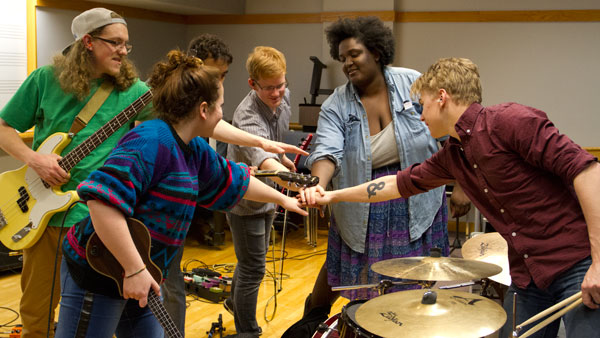There’s not really much to be added to the genre of “personal redemption via [insert art form here].” The key is showcasing the chosen art and illustrating its fresh and vital appeal within a well-established framework. “Stomp the Yard” hits this mark, doing for stepping what “Roll Bounce” tried to do for synchronized roller-skating.
Here’s the formula: The troubled, working-class lead turns away from the art form at which he or she excels, then returns triumphantly to overcome personal adversity, win the championship and end the film with a kiss.
All of these clichés show up in “Stomp the Yard” — plus a gruff disciplinarian father figure with a soft spot, a girl from the right side of the tracks, an inter-fraternity rivalry and a roommate there to provide comic relief. Happily, it also has some stellar dancing to lift it near the top of the dance movie heap.
DJ (Columbus Short) is the tormented hero whose brother dies in a fight after the film’s opening dance-off. He leaves Los Angeles for Atlanta’s fictional Truth University, resolving to leave the world of pop-and-lock behind him.
Unfortunately for him (but fortunately for the film, which otherwise would be called just “Yard”), Truth University is home to competitive fraternities that are all about stepping. After DJ serves Mu Gamma Xi member Grant (Darrin Dewitt Henson) on the dance floor, both the Mus and the Theta Nu Thetas try to recruit him.
At first DJ resists, but then he wanders into an art gallery featuring all the worthwhile and successful alumni of Truth’s fraternities. He realizes it’s about more than just the stepping and decides to pledge with the underdog Theta Nus and the old school values of Zeke (Laz Alonso). Along the way he hooks up with April, Grant’s girlfriend, played passively by Meagan Good.
In the proud tradition of movies that have used ballroom dancing, ballet, hip-hop, ballet-and-hip-hop, cheerleading, marching band, chess and even physics to tell a story, dance in “Stomp the Yard” is a demonstrative metaphor for the interpersonal politics of the film.
DJ’s successes, failures, personal flaws and his past are reflected in how and with whom he dances. He has to overcome his tendency to show off, embrace the team spirit, deal with survivor’s guilt and use his street skills to enliven the tired moves of the Theta Nus.
Scott Kevan was both director of photography and choreographer, which ensured that each dance scene was so carefully crafted it could be lifted out of the film and played on VH1 (though not during a “Best of 2007” countdown). The final competitive sequences were visually much stronger than the club scenes. The camera work was less frantic and more stable.
Many dance films fall into the trap of sub-standard dialogue that’s nowhere near as good as the dancing. Screenwriter Robert Adetuyi avoids that pitfall for much of the film, but toward the end the trash talk and motivational speeches veer toward trite.
Director Sylvain White is relatively inexperienced in filmmaking compared to many of his cast members, but he’s managed to turn out a fairly engaging picture. The tension doesn’t so much build as it does co-exist peacefully with the certainty of every twist and turn, but the dancing is phenomenal. White has even included enough training montages to keep from committing the dance movie sin of making it look too effortless.
“Stomp the Yard” doesn’t tug at the heartstrings like “Billy Elliot” or give the romantic rush of “Strictly Ballroom,” but it entertains. And if nothing else, it provides vanity shots of sweaty, well-muscled men running in Timberlands uphill into the sunset.
It’s not remotely Oscar-worthy, but it’s not a train wreck either, and as VJ Sway and his oversized hat says in his cameo, “I have never seen steppin’ like this before.”
“Stomp the Yard” was written by Robert Adetuyi and directed by Sylvain White.
“Stomp the Yard” received 2 1/2 out of 4 stars.




